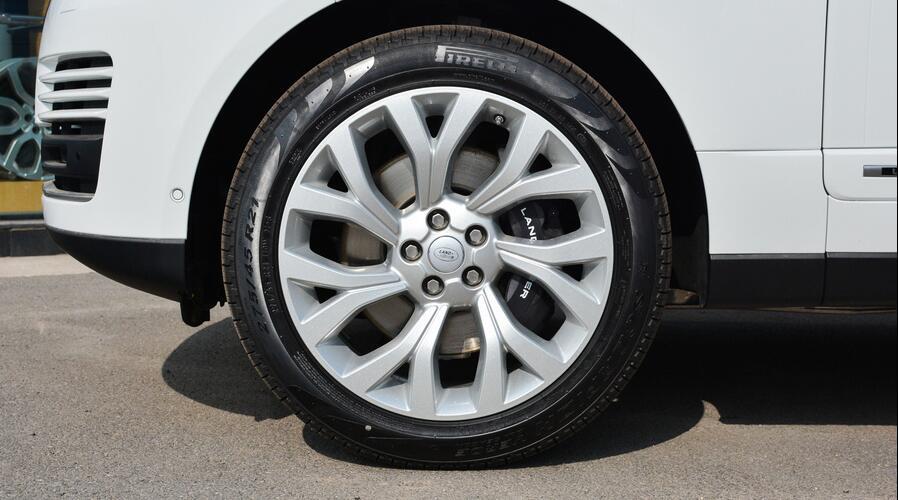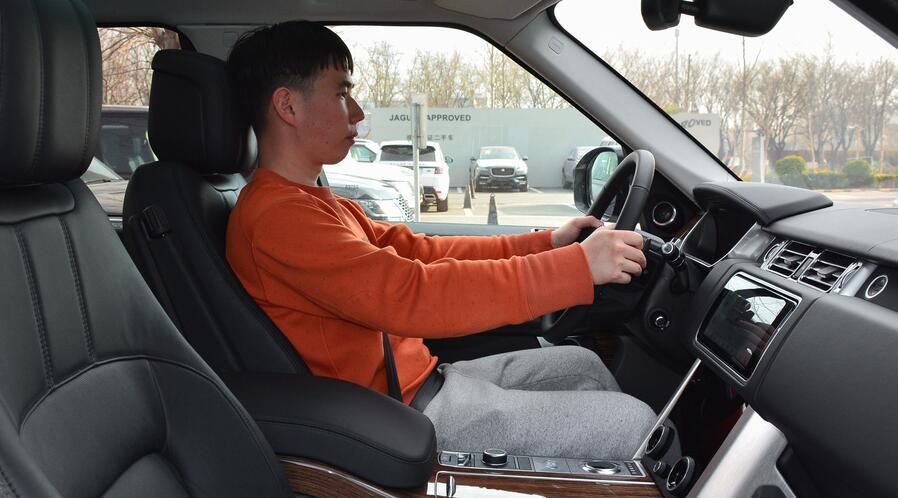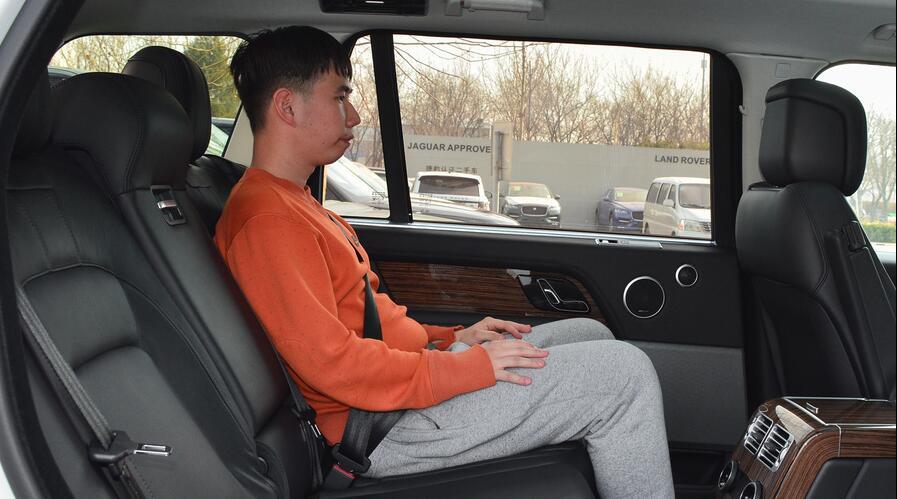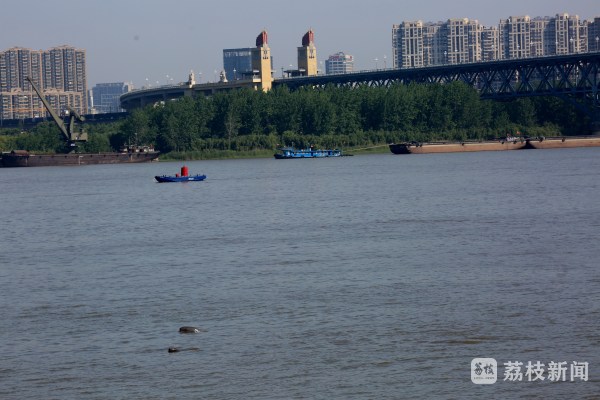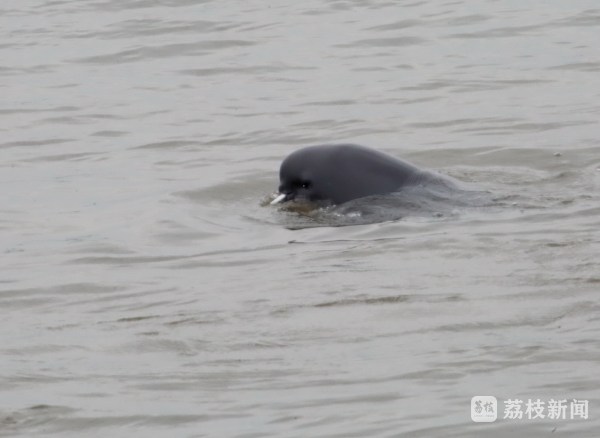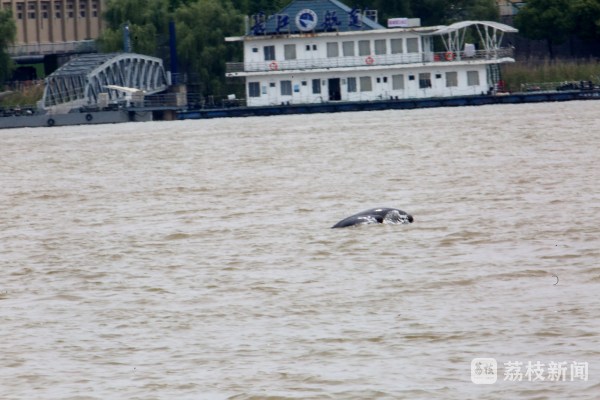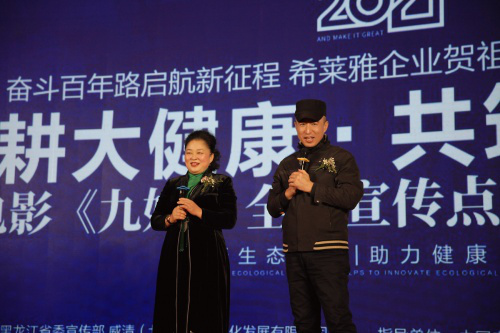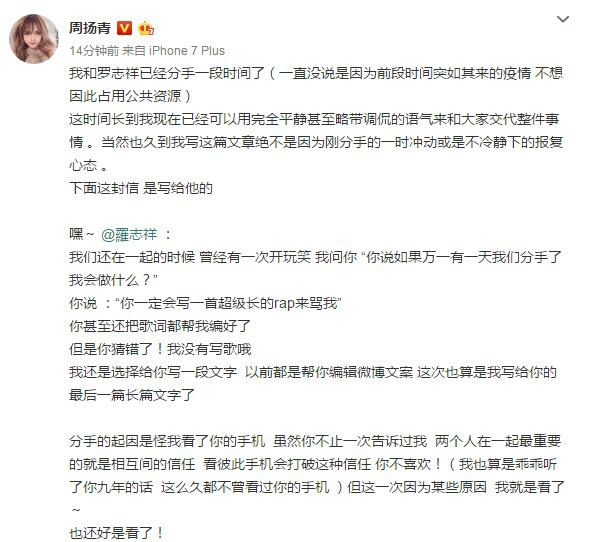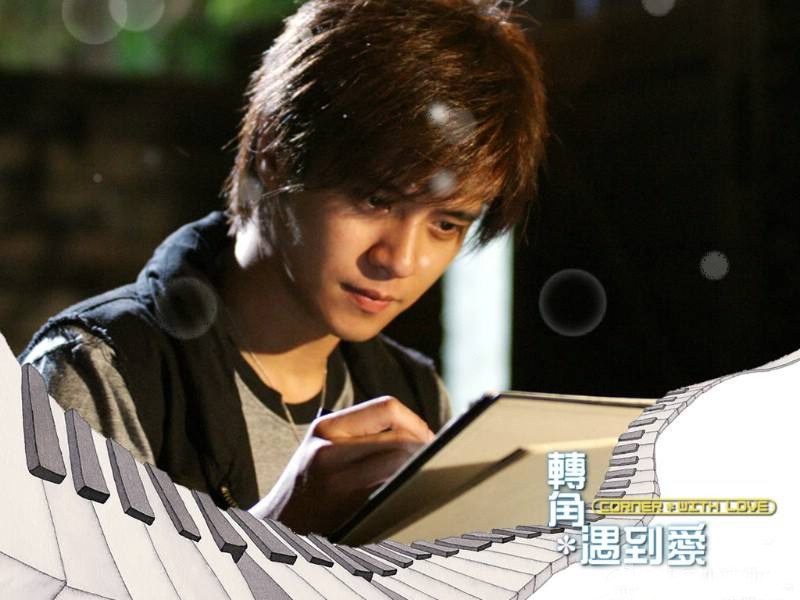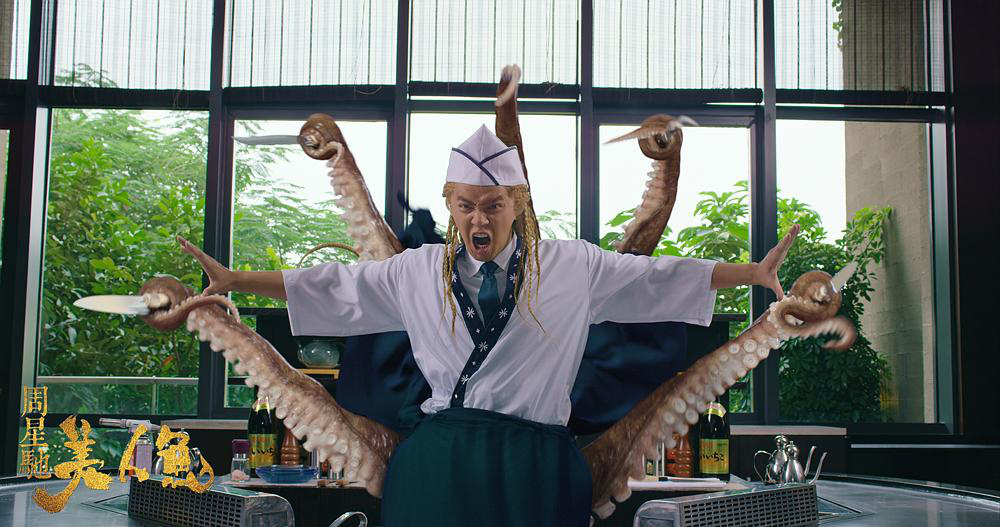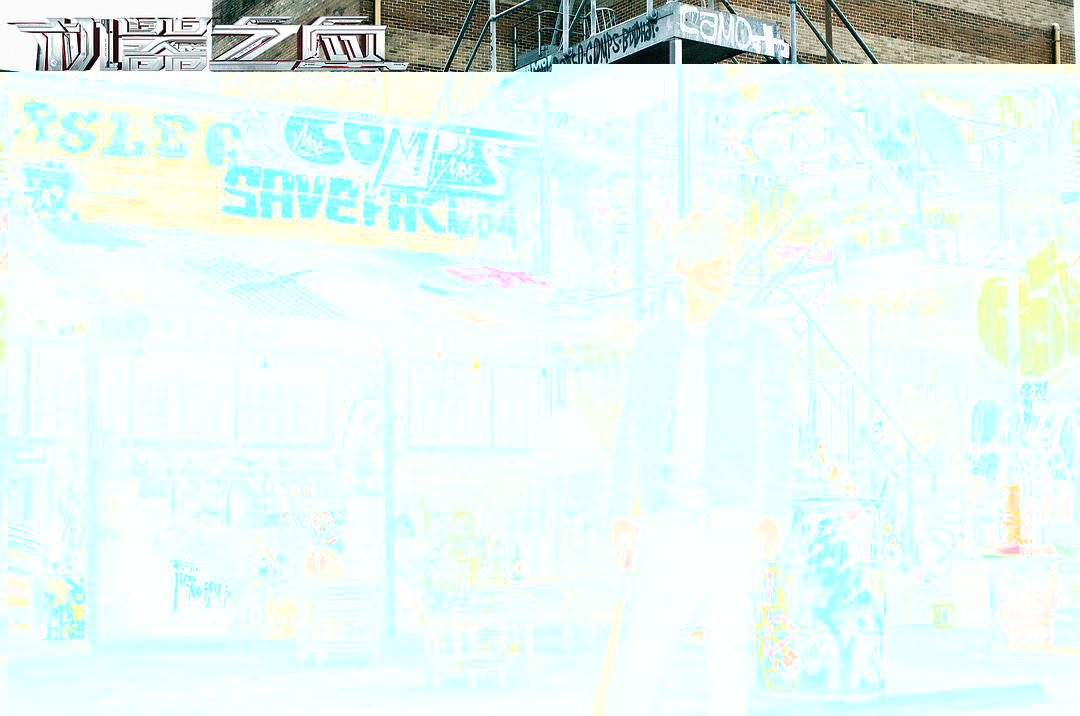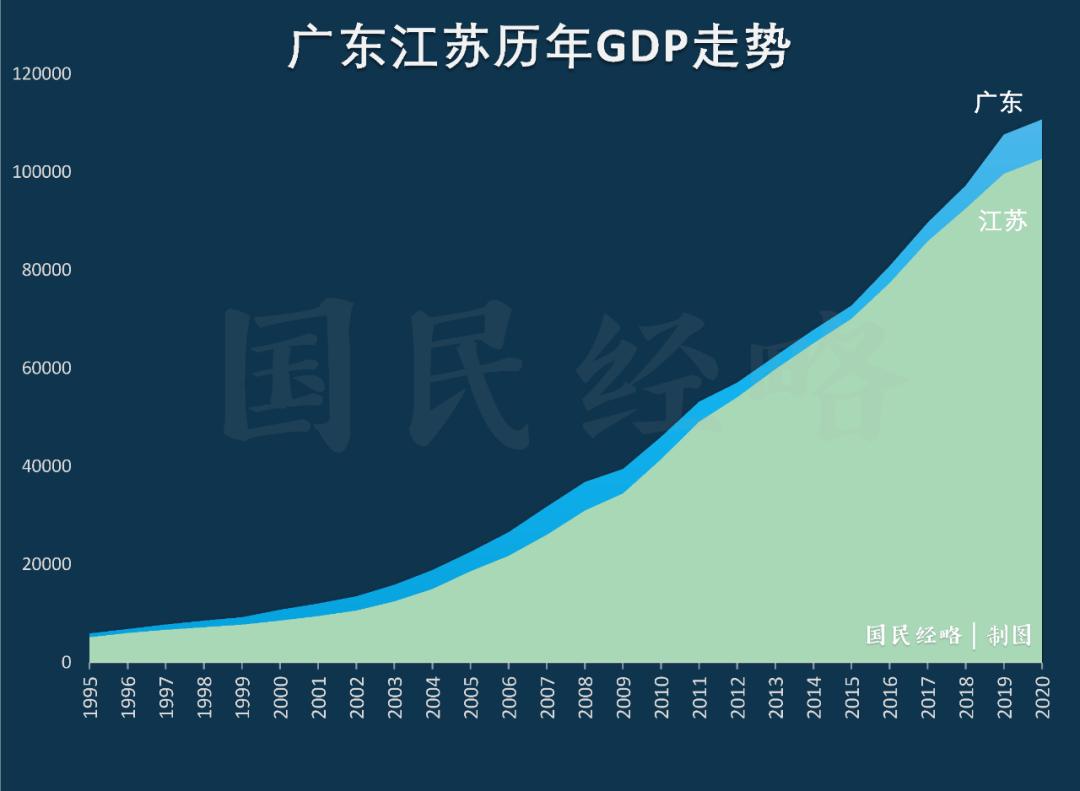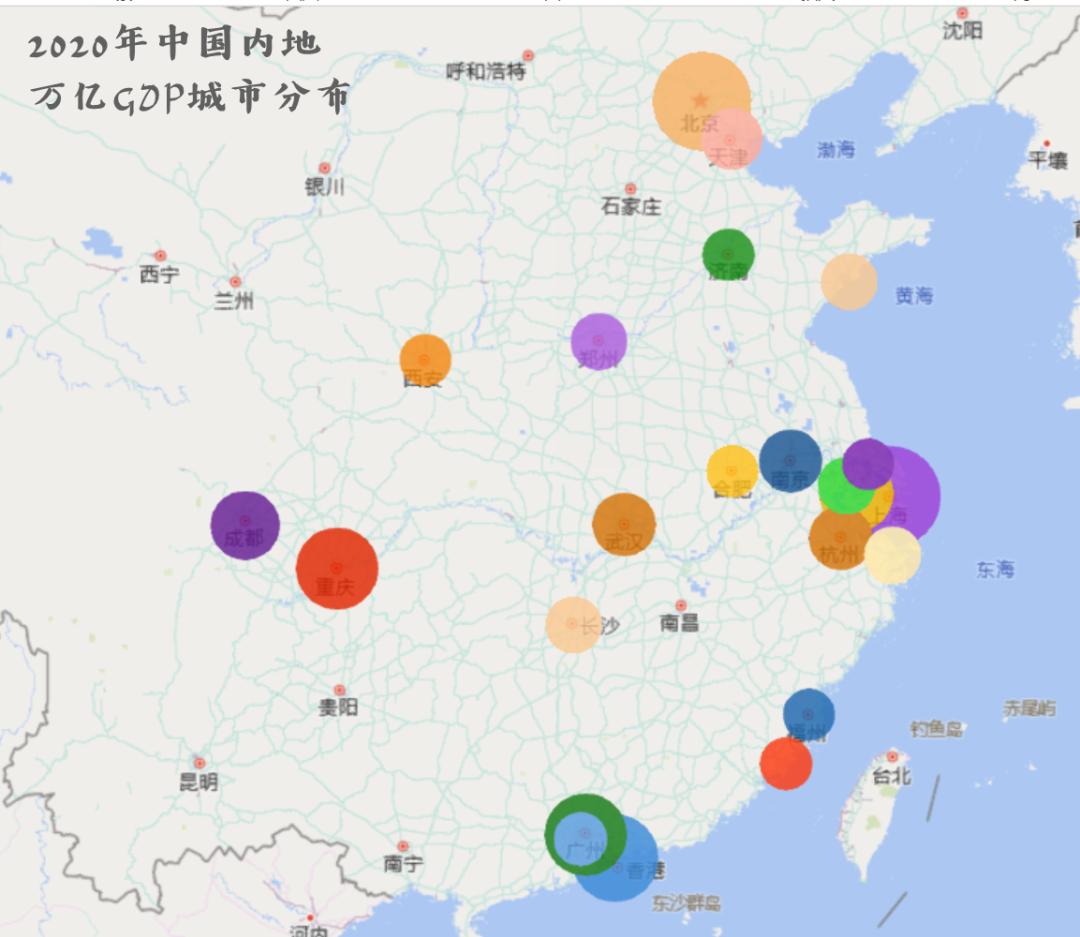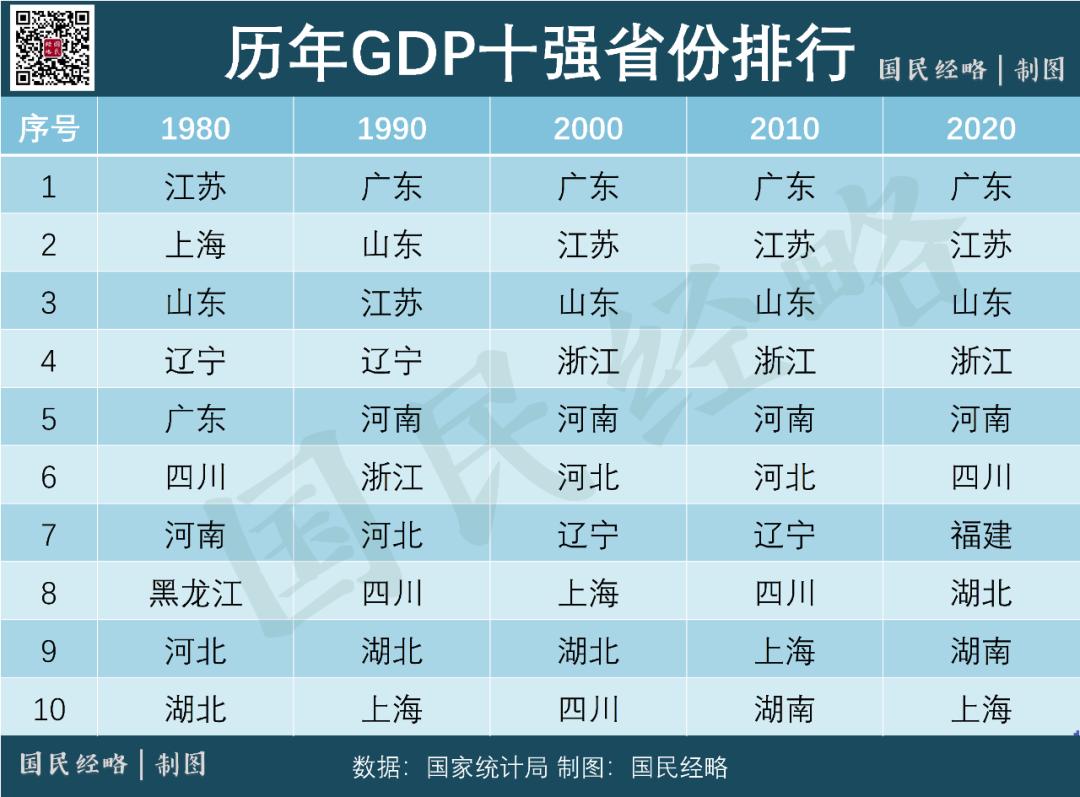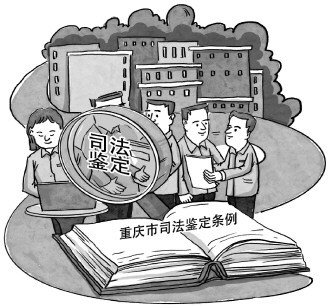A once promising young man, after starting a business for more than ten years, became the culprit of the largest trench oil case in China.
Caixin New Century reporter Xie Haitao
Liu Liguo, dressed in prison uniform, still has a refined air. Born in 1977, he has a clean and fair face, speaks slowly and has a kind face. From time to time, he touches his delicate black-rimmed glasses with his hands.
On December 12, 2012, Liu Liguo appeared in court again for trial. In the eyes of the public in China, he seems to be a villain-he is the main culprit in the manufacturing of the largest gutter oil case in China so far.
According to the indictment of the prosecution in Ningbo, Zhejiang Province, since December 2007, Liu Liguo has been processing and refining kitchen waste oil into non-edible oil that still contains toxic and harmful substances, knowing that others will pass it off as soybean oil for sale, with sales reaching more than 99.2 million yuan.
According to the calculation of 8,000 yuan per ton, the non-edible oil produced by these waste oils is about 12,000 tons. Assuming that all of them flow to the dining table, it is enough for 600,000 Chinese to eat for one year.
In August, 2012, the trial of the case once shocked the public all over the country. This case is known as the first case of the whole process of extra-large waste oil in China, involving 58 enterprises, and many well-known food brands were exposed to the use of waste oil, including five listed companies. Henan Jiaozuo Health Yuan Biological Products Co., Ltd. (hereinafter referred to as Jiaozuo Health Yuan), a subsidiary of Health Yuan Pharmaceutical Group Co., Ltd. (600380.SH, hereinafter referred to as Health Yuan Company), is the largest terminal buyer of waste oil in this case.
The more fundamental reason why this case shocked the whole country is that this case, together with more than 10 cases of gutter oil that were subsequently tried in various provinces, revealed that gutter oil was put on the table on a large scale in China, and it has changed from suspicion to reality.
On July 4th, 2011, a campaign of encirclement and suppression of waste oil, which was supervised by the Ministry of Public Security and originated in Zhejiang, started with Jinan wesen Energy Co., Ltd. (hereinafter referred to as Green Company) of Liu Liguo, and then swept across Shandong and Henan. The official said that it destroyed a black industrial chain of waste oil, which integrates fishing, crude refining, reselling, deep processing, wholesale and retail.
In China, gutter oil has been regarded as a scourge in recent ten years, and it is condemned by many people. In fact, not all cooking waste oil is guilty. In essence, cooking waste oil is also a kind of resource, which has legal uses for manufacturing biodiesel and feed oil.
Pingyin County, Shandong Province, where Liu Liguo was engaged in the processing of waste oil, was once the place where the sage Confucius came to give lectures, leaving behind the "apricot altar"; In recent ten years, the production of waste oil has become very popular, and there are many "enterprises", which are rarely investigated. Liu Liguo’s enterprise is only a latecomer, and even until he is caught, his waste oil production scale is not the largest.
More than a decade ago, Liu Liguo, who had the idea of "wanting all his brothers and sisters in the family to live a good life", was embarrassed and repeatedly hit a wall. A story about a neighboring village getting rich by cooking oil affected his life path. After he was involved in gutter oil in 2003, he tried to make biodiesel and feed oil from gutter oil for several years, but he was once heavily in debt. According to the prosecution’s allegations, since 2007, he began to use waste oil to make "red oil" on the table.
People with insight pointed out that the unique external environment of waste oil in Pingyin County and Linyi City, as well as Liu Liguo’s waste oil road, are worthy of reflection by food supervision departments and governments at all levels. At this level, Liu Liguo’s case is only the starting point for eradicating waste oil from the table.
In pursuit of Liu Liguo’s life track, he was not an evil person. The evil flower of gutter oil did not break ground in this land of roses that suffered Confucianism in an instant. Everything happens for a reason. Hannah Arendt, a sage, has a theory of "ordinary evil". In short, an ordinary person, who is in a specific environment and becomes a member of a running machine, is also easy to do evil things because he chooses to "obey".
What about Liu Liguo to waste oil? The truth doesn’t seem clear. During the trial, seven defendants, including Liu Liguo and his brother Liu Lihai, his eldest brother-in-law Yu Shuangying and his second brother-in-law Lu Jun, collectively retracted their confessions in court, and lawyers also pleaded not guilty.
Analyzing the case outside the court and the turbulent public opinion outside the court seems to reveal that gutter oil is in past lives, China, restore a complex social ecology of gutter oil rivers and lakes, face the misunderstanding of policies in related fields, and even the vacuum of supervision by functional departments, which may provide reference for food safety in China.
Liu Liguo’s prequel
"If the benefits are good, the aluminum factory will not collapse, and he will not reach this point." In the family courtyard of Pingyin Aluminum Factory, a retired worker talked about Liu Liguo with emotion.
Pingyin is a suburban county in Jinan City, Shandong Province. Pingyin Aluminum Factory, located in the suburb of the county, is 1 km south, which is Helou Village in Kongcun Town. Kongcun town was named after the ruins of Confucius’ lectures in the Spring and Autumn Period. In 1977, Liu Liguo was born here, with three sisters and one brother, and his father had been a village party secretary for many years. More than ten years ago, he and his two sisters were admitted to school and jumped out of the farm gate, which was envied by the villagers.
In the impression of Liu’s third sister, although Liu Liguo is the youngest in the family, he has been sensible and filial to the elderly since childhood. When he was in primary school, he cooked for himself since the third grade in order not to let his mother get up early every day. He is also a quick-witted and diligent person with great energy. For example, when others play poker and games in their spare time, he looks up information and reads books when he is free.
After graduating from high school, he was admitted to Shandong Salt Industry School (later renamed Shandong Light Industry Engineering School), a national key secondary vocational school built in Qingdao, known as the "cradle of golden blue collar". Four years of secondary school study, beautiful and economically developed Qingdao, broadened his horizons. After graduating and returning to Pingyin in 1997, he once wanted to do business and open an electronic goods store, but under the influence of his parents, he entered Pingyin Aluminum Factory.
Shandong Pingyin Aluminum Factory, located at the foot of Wolong Mountain, the remaining vein of Mount Tai, is an old state-owned enterprise founded in 1966, which belongs to Shandong Metallurgical Industry Corporation. In the 1980s, it was once brilliant, and it was tied with national cotton, bearing bush and standard parts as the four traditional Pingyin factories, which was a place of envy for the surrounding rural youth.
Liujia has an indissoluble bond with Pingyin Aluminum Factory. Not only Liu Liguo, but also the main helper in the waste oil processing plant in the future, and those who ended up behind bars with him, have worked in Pingyin Aluminum Plant for a long time.
In 1988, after the first phase expansion of Pingyin Aluminum Factory, Liu Liguo’s brother Liu Lihai entered the aluminum factory. In 1994, the second phase of expansion and recruitment, Liu Liguo’s eldest brother-in-law Yu Shuangying entered the factory. In 1989, Lu Jun, who later became Liu Liguo’s second brother-in-law, was assigned to work in an aluminum factory. Lu Jun, who graduated from Northeastern University, worked as the secretary of the Youth League Committee of the factory, the secretary of the Party branch of the electrolytic workshop, and the vice chairman of the factory’s trade union. He has a good reputation among the old workers. "He is enthusiastic and serious, has a good popularity, and has hosted weddings for many young people."
When Liu Liguo entered the factory in 1997, the scenery of Pingyin Aluminum Factory was no longer there. According to a master’s thesis entitled "Research on the Development Strategy of Pingyin Aluminum Factory" published by Shandong University, from 1997 to 2000, although the aluminum factory contracted and concentrated on aluminum management, the debt ratio rose to 93%.
Liu Liguo was assigned as a technician in the aluminum profile workshop, with a salary of several hundred yuan in January. Here, he experienced the joy of getting married and the pain of losing his father. He left the impression on his colleagues that his mind was flexible and he solved many technical problems.
After 2000, Pingyin Aluminum Factory went from bad to worse, and the staff turnover was serious. Liu Liguo is also thinking about the way out. In the impression of Third Sister, my younger brother has a high spirit and has his own ideas about life. He is the youngest of the brothers and sisters, but he is also the most considered by others. "He wants his brothers and sisters to live a good life."
At first, he opened a small supermarket next to the aluminum factory. When the young couple go to work, the supermarket is looked after by their mother. The supermarket has been open for two years and it doesn’t make money.
The benefits of the aluminum factory are still declining, and wages cannot be paid. In May and June 2003, Liu Liguo resigned. Borrowing money from relatives and friends, he started Pingyin Changshun Oil Processing Factory.
The right path is difficult to travel.
Today, there is a small courtyard with a yellow wall on Wanfang Road, where the family courtyard of the aluminum factory is located. The dark red iron gate is rusty, with illegible rental advertisements on it, and the small yard is a row of factories with doors and windows open. The yard like this small workshop is where Liu Liguo started.
In 2003, Liu Liguo built a humble factory in a rented small courtyard, hired three or four people and started an oil business. The yard is only thirty or forty meters away from the aluminum factory, and his brothers-in-law came to help after work from the aluminum factory. My brother Liu Lihai was diagnosed with femoral head necrosis this year, and he often took his brother everywhere to seek medical treatment.
In the impression of Lao Li, a former colleague of the aluminum factory, at first, Liu Liguo was doing good oil. "At that time, it was to process lard, that is, to remove the color and smell of lard, and then sell it, which is for human consumption." Later, Liu Liguo said in an interview with China Newsweek at the detention center. Lao Li said that Liu Liguo also used raw materials for killing chickens in chicken farms and made chicken oil.
In the eyes of his family, when Liu Liguo started his business, it was very bitter. Many things were out of reach, and he tried many times and failed. Around 2004, he also purchased cottonseed oil and palm oil and processed them into feed oil to sell. The oil color is like soy sauce, but it can only be processed for two or three tons a day. In the first two years of going to sea, Liu Liguo lost money because of his inexperience. He borrowed money from relatives and friends one after another, and once owed nearly 2 million yuan. In 2004, Sanjie also helped him borrow money.
"No matter how much you lose, you can only go forward." Liu Liguo later said in an interview with China Newsweek. In the third sister’s view, he is a man who can carry on and doesn’t complain to others easily. Sometimes it is very fragile, and when it comes to the pain of starting a business, it will also shed tears.
In 2005, it was a turning point for Liu Liguo. At that time, the biodiesel industry in China was still in its infancy, and there was no unified national standard. Liu Liguo, who has a flexible mind, is optimistic about the prospect of biodiesel. This year, he renamed the factory Jinan Zhongxing Fatty Acid Methyl Ester (Fatty Acid Methyl Ester) Factory, and prepared to put into production biodiesel.
In western developed countries, the waste oil from fried food, animal waste oil and restaurant gutter oil is generally regarded as a resource, which can be recycled into biodiesel and animal feed oil. In China, this road is also regarded as a formal outlet for waste oil.
According to Jiefang Daily, in 2005, the raw material of 1 ton of gutter oil in China was still 800 yuan, and by 2006, it had risen to 3,000 yuan/ton. The economic benefits of biodiesel are also considerable. The direct cost of producing 1 ton of biodiesel is about 3,500 yuan, and the market price at that time was about 5,000 yuan per ton.
According to China News Weekly, Liu Liguo first spent 100,000 yuan to buy the patented technology of "Pilot Test of Lipid Vegetable Oil Fuel" from the University of Science and Technology of China. After purchasing equipment and technology, the effect was not satisfactory. Liu Liguo sought advice from Ning Shoujian, an expert member of the National Biodiesel Industry Cooperation Group, and finally formed his own technology through joint cooperation and repeated experiments with a research institute in Zhengzhou.
Liu Liguo mainly bought waste oil from Beijing as raw material, and the processing technology was only two steps. At that time, there was no standard for biodiesel in China, as long as customers agreed. "It was at this time that I had a deeper understanding of waste oil." Liu Liguo said.
At that time, diesel was in short supply, and many gas stations added biodiesel to diesel. Liu Liguo’s business grew day by day, with a monthly net profit of 200,000 to 300,000 yuan at the highest. By 2007, he had almost paid off his debts. During this period, my brother Liu Lihai was on sick leave from the aluminum factory. In the first half of 2006, he also came to the factory to help.
The good times didn’t last long. With the decline of diesel price, the market demand for biodiesel decreased. "There was no market later, and PetroChina and Sinopec didn’t want it. Who else could they sell it to?" In his confession, he said that biodiesel was produced for eight or nine months, and the products were mainly sold to the petrochemical company in Tai ‘an. Later, due to quality problems, the company did not want the goods.
Liu Liguo’s experience reflects the embarrassment of biodiesel industry. China consumes 90 million tons of diesel oil every year, so biodiesel has great room for development in theory. However, the reality is that many biodiesel enterprises have no suitable development path. The supply of raw materials is one of the constraints, while Sinopec and PetroChina monopolize the diesel supply market, making it difficult for private enterprises to enter the state-owned sales channels, which is also one of the difficulties.
After biodiesel was frustrated, in 2007, Liu Liguo transformed again and went further and further on the road of waste oil.
Waste oil "base"
In 2003, although Liu Liguo was involved in the processing of animal waste oil, he didn’t know much about the waste oil business at this time. Pingyin country has a tradition of running oil mills, but Liu’s family has never set foot in it before. In the eyes of his family, Liu Liguo’s involvement in oils and fats was mainly influenced by Zhu Chuanfeng’s brothers in Guoliugou village.
At that time, in Guoliugou Village, a few kilometers southeast of Confucius Village, Zhujia’s oil refining business had been going on for three years. According to insiders, the gutter oil business in Pingyin County was the earliest in Zhujia, and other places followed suit. In the second half of 2011, shortly after Liu Liguo was arrested, the refinery of Zhujia brothers was taken down by Jinan police. In public media reports, the Zhujia brothers’ gutter oil case is called the largest gutter oil case in Shandong Province.
Zhu Chuanfeng was born in poverty, his father was a factory salesman, his mother was a farmer, and his four brothers were born to kill pigs. Later, they turned to a flour mill and a grain and oil wholesale store. In 1999, Zhu Chuanfeng brought equipment from the south and began to build an oil plant.
Police in Jinan said that at that time, Zhujiajian had built the first production line to produce waste oil from hogwash fat. Jinan police later claimed that Zhujia bought kitchen waste oil from Liaocheng and Tai ‘an in Shandong, Beijing, Sichuan, Inner Mongolia and other places, produced defatted oil and sold it to Henan, Shandong, Anhui, Liaoning and other places.
On March 3, 2009, after several years of operation, Zhu’s brother and brother in Guoliugou Village registered and established Jinan Fada Oil Industry Co., Ltd., whose registered business scope is biodiesel processing and sales.
The Zhujiajian brothers’ industry is getting bigger and bigger. A villager described its prosperity: the big trailer transporting waste oil raw materials from other places is 20 to 30 meters long, full of diesel barrels, and can have at most five or six cars a day. It comes down from the nearby Xiaozhi Expressway intersection, travels 10 kilometers northbound along National Highway 105, 3 kilometers eastbound from the north of Dongtiangong Village, passes through Wang Xiaotun and Fanpizhuang, and then travels 1 kilometer southbound, and goes straight to Zhujia Factory at the east end of Guoliugou Village.
Tankers who come from other places to pull oil usually come at night or Saturday and Sunday. If the day arrives, stop at the nearby Kongcun gas station and wait until it gets dark. In the oil truck, the villagers saw cars in Nanjing, Jiangsu, Jining, Shandong and other places, while an edible oil factory in Tai ‘an came in a few days.
The rise of the Zhujiajian family makes people jealous. Rural madness: Zhujia can earn 200,000 to 300,000 yuan a day.
Waste cooking oil is made into biodiesel, feed oil and other legal ways, and its profit margin is far less than that of illegal "edible oil". The fundamental reason why gutter oil is on the table is the existence of this profiteering space, and this profiteering method has not been punished for a long time.
The raw material oil of gutter oil, known as "crude oil" in the industry, is generally refined from the meal waste pulled out from the restaurant trench, and some of it is refined from the discarded oil of fried food and animal fat. The site of refining "crude oil" (especially the refining of meal waste) is generally extremely dirty, which is scattered by some individual practitioners in the suburbs of various cities. The Zhujia brothers, Liu Liguo and other Pingyin waste oil plants are engaged in the acquisition of "crude oil" and the processing of "red oil".
The whole chain of cooking oil on the table is full of illegal interests. Taking the processing of "red oil" as an example, according to Liu Liguo’s later statement, in 2011, the "crude oil" acquired was more than 5,000-6,000 yuan per ton. The main product of his gutter oil factory is refined oil, which is called "red oil" by the industry, and the price is around 8300 yuan. Liu Liguo conservatively said that the production loss per ton of "red oil" is about 800 yuan, and the production cost is about 600 yuan. If you process 1 ton of "crude oil", you will probably earn five or six hundred yuan.
Zhujiajian oil plant is not without objection. The villagers said that when the southeast wind blows, most of the villages stink. Because of the strong taste in the village, young people can’t get married, so rich people move to the city to live. The Zhujiajian brothers are overbearing, and the people in the village have great opinions and have no place to mention them.
Why don’t environmental protection departments and other government departments check? The villagers’ answer is: every year, people from the government come to check, but the Zhujiajian family can last for half a year with some money. "After a long time, law enforcement officers and Zhujia will mature."
In this environment, the Zhujiajian made the industry bigger and bigger, which also attracted the envy of some villagers with thin funds and followed suit. Liu Liguo was of course the most successful imitator, and later became the most powerful competitor of the Zhujiajian brothers in the local area.
In addition to Liu Liguo, in 2009, in Dong ‘e Town, west of Confucius Village, a waste oil processing plant has been in operation for a long time in the old workshop of the old paper mill. Here, it is very quiet by the 220 national highway in the west, the short hillside in the east and far from the village. In Jianggou Village, the town, a ginger boss who engaged in sweet potato processing quietly switched to waste oil processing, but it was left unattended for several years. A villager in nearby North Zhang Cun later told Caixin that he thought his superiors allowed him to do so.
By January, 2011, Wang Zigang, Yu Shubin, Song Qinghua and others from Kongcun had established Jinan Taixin Oil Industry Co., Ltd. in partnership on the south hillside of Jingou Village, west of Kongcun Town. At 3 kilometers south of Confucius Village and south of Dongtiangong Village, Zhao Jingyu, Qu Hou and others from Confucius Village also set up Jinan Zhengcheng Feed Co., Ltd. in partnership.
According to Liu Liguo’s confession, there are at least five waste oil enterprises in Pingyin County alone.
Linyi is another gathering place of waste oil enterprises in Shandong Province, and Liu Liguo later reported four enterprises here. They also lack corresponding supervision and exist openly for many years.
"Advanced" gutter oil
For several years, Chen Junshi, an academician of China Academy of Engineering and a researcher at the Institute of Nutrition and Food Safety of China CDC, repeatedly told the media that the problem of cooking oil in China is not serious, because the technology of cooking oil with cooking oil is complicated, which is difficult for ordinary people to master, and the refining cost is expensive, which is not worth the loss.
However, in a public occasion a few months ago, Chen Junshi admitted to many media reporters including Caixin that he had underestimated the present situation of cooking oil on the table. What’s more, what Chen Junshi has learned shows that many enterprises involved in gutter oil crimes not only have mastered the refining technology, but also have a high level. Many food safety experts believe that there must be professional oil experts involved in the production of waste oil.
If the prosecution is admitted by the court, Liu Liguo is engaged in the processing of waste oil, which is the most important part of this "advanced" waste oil business.
Around 2007, Liu Liguo started his own transformation of waste oil business in the small yard next to Pingyin Aluminum Factory. For his business after 2007, Ningbo police and prosecutors directly stated that he was producing waste oil for consumption, but he denied it in court and retorted that he was only producing feed oil beyond the business scope.
Processing waste cooking oil into feed oil for feed production is another legal way to utilize waste cooking oil. However, the production of feed-grade mixed oil must obtain the permission of the provincial agricultural department, and Liu Liguo’s company has never obtained the permission.
In the domestic feed oil market, manufacturers without production licenses account for a large proportion, and many enterprises’ feed oil eventually flows, and there are also regulatory blind spots. It is unknown whether there are enterprises that import waste oil products into the edible oil market in the name of feed oil.
On March 9, 2009, Liu Liguo rented a 1,300-square-meter workshop in Jixi Industrial Park in Pingyin County with a registered capital of 500,000 yuan, and established Jinan Bohui Biotechnology Co., Ltd. (hereinafter referred to as Bohui Company). The company claims that it can produce 10,000 tons of biological wax and 20,000 tons of refined feed oil annually.
In May 2010, Liu Liguo registered and established Jinan wesen Energy Co., Ltd. (hereinafter referred to as Green Company). According to the industrial and commercial archives, the company has a registered capital of 1 million yuan, and its general business projects are the production and sales of biodiesel, oleic acid, stearic acid and fatty acids. His family told Caixin reporter that the actual total investment of Green Company was nearly 10 million yuan, and Liu Liguo borrowed nearly 2 million yuan from relatives and friends, and borrowed nearly 2 million yuan.
According to the oil processing experts told Caixin reporter, in fact, the use of "crude oil" to produce feed oil and biodiesel is mainly in different directions, and some technical processes in the early stage are not very different. Lawyer Wang Silu also believes that Green’s biodiesel equipment can be used to produce feed oil after simple transformation except for individual process equipment. After the feed oil reaches a certain acid value, it is easy to be transported into the edible oil market.
Huang Changshui, a buyer of "crude oil" in Ningbo, is one of the raw material suppliers of Liu Liguo’s enterprises. After his arrest, Huang Changshui said that he met Li Shujun (who was in charge of purchasing raw materials in Liu Liguo’s enterprise) in the first half of 2009. At that time, Li Shujun measured his oil with an instrument and thought that the acid price was high, so he didn’t buy it. Huang Changshui judged that Li Shujun had a high demand for oil. Unlike industrial oil, it was probably used for cooking oil.
Acid value is a sign of free fatty acid content in fat. Generally, the smaller the acid value, the better the quality of oil. Generally, the finished fourth-grade soybean oil has an acid value of ≤ 3.0; First-class soybean oil, acid value ≤0.2. The acid value of feed-grade mixed oil is ≤20.
After the incident, many core managers of Green Company confessed the production process of the company: basically, more than 30 tons of "crude oil" was delivered to the company every day. After unloading, someone will test the moisture and acidity in the "crude oil". For "crude oil", Green’s requirements are that the water content should not exceed 7% and the acid value should not exceed 15. "Crude oil" is heated and melted and sent to the hydrolysis workshop. There are nine iron cans in the hydrolysis workshop. Workers put clay and activated carbon in the iron cans for adsorption and filtration. After this processing, the color of "crude oil" becomes clear and the smell becomes smaller.
After that, "crude oil" will enter the distillation workshop for high-temperature distillation to remove impurities, sour taste and spicy taste again; Finally, the "crude oil" enters the fractionation workshop, and the distilled "crude oil" is physically diverted to form products, of which 30% to 40% are fatty acids and 60% to 70% are red oil.
Among Green’s products, fatty acids are by-products. The ex-factory price of "red oil" is more than 8,000 yuan per ton, which is the company’s main profit item. Its acidity requirement is about 2, which has basically reached the standard of four-grade soybean oil.
According to the information of the prosecution, after processing, "red oil" has no odor, looks clean, and its color is darker than that of edible oil. Its main indicators are close to that of edible oil, but it has no fragrance, but it is a little spicy.
Li Shujun confessed that when customers have requirements for oil products to be spicy, he will arrange workers to taste the spicy degree of oil. Li Shujun also tasted it once and retched for several days. If the oil has a spicy taste, it should be distilled at high temperature to deodorize it. Generally, the temperature of distillation is controlled at about 270 degrees. If the oil is a little spicy, the temperature will be raised to 290 degrees. But this method can not completely remove the spicy taste, but can only reduce it.
Ordinary workers are unaware of the company’s production situation. Yang Honglei, an employee, confessed that during the processing, workers were not allowed to bring outsiders into the factory, nor were they allowed to cross posts, and they were not allowed to ask questions at ordinary times. In the refined oil workshop, the east gate is usually locked, and the west gate is closed, so workers have to close the door behind them when they enter and leave.
In fact, Green Company pollutes the surrounding environment greatly. In the impression of Feng Sister-in-law, a villager on the nearby Diaoshanpo, on the afternoon of April 22, 2010, there was a smoky smell. "It was a smell of dead cats and rotten dogs, which smoked people except retching, and then they had a headache." Since then, the roses planted near the company will die for no reason, the fruits on the fruit trees will turn black and fall off, and rabbits and chickens will die of respiratory infection. The victims petitioned several times, but to no avail.
Before Liu Liguo’s company was raided by the police, all procedures were legal. In October 2010, Shandong Academy of Sciences issued an environmental impact report, saying that the project construction is feasible from the perspective of environmental impact. In August 2010, the feasibility study report of the project made by Jinan Engineering Consulting Institute stated that the project recycled waste oil to produce biodiesel, which protected the urban and rural environment and effectively prevented waste oil from flowing into the dining table.
"The absence of government supervision is an important reason for the proliferation of manufacturing and selling’ gutter oil’." Liu Liguo’s defense lawyer, Wang Silu, once said in court that the long-term existence of gutter oil production and sales is the long-term default of the government based on the consideration of promoting regional economy; This phenomenon is tantamount to sending a signal to the local people in Pingyin County, making them generally believe that it is not illegal to manufacture and sell gutter oil.
Ding Shihui, deputy head of the Public Security Corps of Zhejiang Provincial Public Security Bureau, who was in charge of investigating the case of Green Company, also believed that the biggest difficulty in dealing with food safety problems lies in local protection. In an interview with Xinmin Weekly, he said: "For the sake of taxation and political achievements, (relevant departments) turned a deaf ear to the problems existing in the jurisdiction and even reported by the people many times, and even formed a community of interests with illegal manufacturers."
Inter-provincial chain
Another thing that worries food safety experts has been verified in the largest gutter oil case in China: in the process of manufacturing and selling gutter oil, one enterprise is often only responsible for one section, and its raw materials and finished products are often transferred and sold across regions or even provinces, which is very difficult to investigate.
A complete process chain of illegal waste cooking oil generally consists of digging and collecting waste cooking oil, crude refining "crude oil", refining "red oil" and adding edible oil. "Red oil" has many names in the market, and illegally entering the edible market is called "rice bran oil". Generally speaking, in the black chain of gutter oil, "rice bran oil" can be sold as "refined oil" after blending with edible oil.
The sale of Green Company’s "Red Oil" is a "trade secret" and Liu Liguo is personally responsible for it. According to the prosecution’s materials, if there is "goods" to be delivered, Liu Liguo will contact the driver at noon or afternoon the day before and give them the telephone number of the consignee. Not only does the source of "crude oil" come from all over the country, but Liu Liguo’s finished product "red oil" is also sold in other provinces.
In 2009, Liu Liguo’s customer network has basically taken shape. This year, he reconnected with Cheng Jiangping, who is an oil business intermediary. In February of that year, through his introduction, I met Yuan Yi, who runs a grand grain and oil firm in Qingfeng grain and oil market in Henan.
Yuan Yi started cooking oil in 2008. According to Liu Liguo’s confession, in June and July of 2009, after Bohui Company was put into production, Yuan Yilu continued to import oil from Liu Liguo. Her requirement for "red oil" was that the acid value should not exceed 2 and the taste should not be spicy. Yuan Yi has to pay the introducer Cheng Jiangping and 1000 yuan a commission for each car fuel.
Yuan took a handful of oil from Liu Liguo and called it "rice bran oil". In her Qingfeng market, many people are selling "rice bran oil". She later confessed that in business, others are also doing "rice bran oil" business, and this piece is also profitable, and it is also a variety in her entire product structure, and customers have needs; Without such low-end products, it will have an impact on the sales of other high-end products.
Ningbo police later accused Yuan Yiming of knowing that Liu Liguo’s kitchen waste oil was processed into refined oil, but he still bought it in large quantities, sold it to Liu Hanju in Xinxiang, Henan Province and Qiao Xinbao’s grain and oil company in Sanmenxia at a higher price, or sold it to the canteen and night stalls on the construction site through canned retail, causing the kitchen waste oil to flow back to the dining table, with sales reaching 3 million yuan.
In June 2009, Liu Liguo learned from the delivery driver that a batch of oil that Yuan Yi wanted from Bohui Company was sent to Henan Wellcome Grease Co., Ltd. (hereinafter referred to as Wellcome Company). This is a company engaged in oil, edible oil and other businesses. Its chairman Bu Qingfeng also runs Henan Qinglong Trading Co., Ltd.. In August and September of that year, Su Feng, Ma Guofu and Cui Rufeng from Henan province and Liu Zhanliang from Hebei province first pulled oil from Bohui Company and resold it to Wellcome Company.
In October 2009, Liu Liguo found the information of Wellcome Company and Chen Baogang, the general manager of Qinglong Company, and went to Zhengzhou to find Chen Baogang with a bottle of "red oil" samples. In the absence of Chen Baogang, Liu Liguo left sample oil and business cards in the office.
Since then, Chen Baogang introduced Liu Liguo to Wellcome Company. Since the second half of 2009, Wellcome has successively imported more than 7,000 tons of oil from Liu Liguo, becoming its biggest customer in one fell swoop. In Chen Baogang’s impression, Liu Liguo wears glasses, is quite tall and has a flexible brain. He said that he is doing many bioenergy projects, such as developing biodiesel.
Ningbo police later accused Wellcome of blending the inferior refined oil purchased from Liu Liguo into normal soybean oil and selling it to food enterprises such as Henan Longxiang Food Co., Ltd., with a total sales volume of more than 160 tons and a sales volume of more than 1.5 million yuan; It was sold to more than 50 enterprises such as Henan Muhe Feed Co., Ltd. for feed production and drug processing, with a total sales of more than 30,000 tons and sales of 300 million yuan; It accused Qinglong Company of doing the same thing and selling it to Jiaozuo Health Yuan Company for the production of drugs, with sales of nearly 50 million yuan.
In 2009, Liu Liguo also expanded the local business in Pingyin. In the "feed oil" rivers and lakes, Pingyin people Yu Haibo and Xing Hongsheng did not set foot in it at first.
In 2006, Yu Haibo registered Jinan Qianmen Business Center, bought four-grade soybean oil from all places at low prices and sold it to Shandong Qifa Pharmaceutical Co., Ltd. to earn the difference. In 2008, he got a bottle of sample gutter oil from Chuanbo Zhu, Guoliugou Village, and went to Qifa Company for inspection. The inspectors of the pharmaceutical factory said that the sample was qualified. Yu Haibo decided to get oil from Zhujiajian. By October 2009, the merchant found Liu Liguo and began to import oil from Bohui Company, and transported about 3,500 tons before and after.
In the second half of 2010, through Cheng Jiangping’s introduction, Liu Liguo also met Li Guangsheng, a native of Xi ‘an. Li Guangsheng usually rents a tanker from Linyi to transport oil.
In the later court, Liu Liguo and others were accused of six criminal facts:
Knowing that the other party is engaged in edible oil business, or knowing that the other party will blend the non-edible oil purchased from it with normal soybean oil, and then sell it in the name of normal soybean oil, the non-edible oil processed from kitchen waste oil is sold to: Liaocheng Changquan Grain and Oil Industrial Company of Shandong Province operated by Yang Jiquan, with a sales volume of 5.69 million yuan; Sales to Yuan Yi or Yibao Grain and Oil Business Department of Weibin District, Xinxiang City, Henan Province and Sanmenxia Xintai Grain and Oil Co., Ltd. operated by Liu Hanju and Qiao Xinbao respectively with Yuan Yi and Cheng Jiangping as intermediaries, with sales reaching 3.08 million yuan; Sales to Wellcome Company and Qinglong Company, with sales reaching 66.18 million yuan; Sales to Jinan Qianmen Business Center, with sales of 16.83 million yuan; Sales to Liu Zhanliang’s Shunfa Grain and Oil Distribution Office in Xingtai Development Zone, Hebei Province, with sales reaching 7.04 million yuan; It was sold to Shaanxi Gufeng Grain and Oil Industry and Trade Company in Li Guangsheng, with a sales volume of 1.32 million yuan.
Hit hard
At 4: 00 am on July 4, 2011, drivers Liu Fanjin and Shi Baoyu drove to deliver the goods as usual. They unloaded oil in a factory without a factory name in the suburb of Sanmenxia. This is a deal under the surveillance of the police, and it is also the last business done by Green Company.
On the afternoon of July 4, Mrs. Feng, a resident, mowed grass in the field and saw many people coming near her home. Some people in police uniforms, some with cameras, rushed to Green Company from the cornfield above the orchard …
Liu Liguo was taken away at the gate of Bohui Company. According to Xinmin Weekly, he hurried downstairs with a phone in one hand and a car key in the other, and was held down just before he walked to the Mitsubishi SUV. Afterwards, he learned that he knew that some policemen had rushed into Green’s company and was looking for someone to inquire about the origin of these policemen.
On June 6, 2011, before January, Green Company completed the equipment transformation, and the production capacity increased from 30 tons of refined oil per day before 2011 to 60 tons per day.
His customer base was still expanding. Hebei people Sun Weidong and Sun Huping are engaged in edible oil wholesale in Liaocheng, Shandong Province. Since 2010, they have bought 100 tons of oil five times. Guo Zhiqin, Fushun, Liaoning Province, began to send cars to transport oil in May 2011, and transported about 200 tons. Guo case was included in the top ten gutter oil cases announced by the Ministry of Public Security in 2011.
At this time, in Guoliugou village, the Zhujiajian brothers built a new factory, and the two factories can produce 100 tons of oil every day. In the south of Jingou Village, Taixin Company in Wang Zigang can produce about 30 tons of oil every day; Zhengcheng Feed Co., Ltd. opened by Zhao Jingyu produces about 30 tons of oil every day.
When the business of ditch oil plants in Pingyin is booming, the end point is approaching. On March 30, 2011, when Green Company had not started construction, Huang Changshui, who bought "crude oil" in Ningbo, was questioned by Ninghai police on suspicion of producing and selling food that did not meet the hygiene standards. The eyes of the police were drawn to Pingyin. A week ago, the salesman sent by Li Shujun also bought 185 barrels of "crude oil" from Huang Changshui …
Only two weeks after Liu Liguo was arrested, on July 20, 2011, Jinan Public Security Bureau filed a case investigation against the developed company in Guoliugou Village. The police later claimed that 16 people, including Zhu Chuanfeng, were arrested, and the first major case of producing and selling waste oil in Shandong Province was detected. At the same time, three enterprises, including Taixin Company and Zhengcheng Company, were destroyed, 38 suspects were arrested and five waste oil production lines were sealed up. The waste oil factory in the old paper mill in Dong ‘e Town was reported as early as November 2010, and was ordered by Dong ‘e Town Government to stop production, so the boss surnamed Jiang escaped.
In August, 2012, under the jurisdiction designated by the Supreme People’s Procuratorate and the Supreme People’s Court, it was examined and prosecuted by the Ningbo Procuratorate and tried by the Ningbo Intermediate People’s Court. The relevant defendants were tried in three groups according to the production and sales links.
In the trial on August 22nd, seven people, including Liu Liguo, collectively retracted their confessions, and both the prosecution and the defense debated whether the defendant "knowingly and intentionally" and whether the evidence could prove that the products were "toxic and harmful food" and "fake and inferior products".
In court, Liu Liguo spoke clearly and logically, which left a deep impression on people. He said that he didn’t know what he bought his oil for, and there was no report that someone had health problems after eating it.
Nie Jianhua, deputy director of the Public Prosecution Office of the Supreme People’s Procuratorate, said in an interview with People’s Daily that it was very difficult to punish crimes endangering food safety. First, it is difficult to prove, including the intentional proof of the suspect’s subjective crime, the proof of the amount of crime, and the characteristics of cross-regional joint crime have also increased the difficulty of obtaining evidence; Second, it is difficult to obtain the necessary expert conclusions for prosecuting charges and finalizing the case.
By December 12, 2012, the case was heard again in the anxious waiting of Liu’s family. The prosecution changed the criminal facts of Liu Liguo involving Li Guangsheng. The lawyer will plead not guilty again.
Four men were arrested in Liujia, Pingyin, which caused the family to collapse half the sky. The postcards written by Liu Liguo from the detention center made my sisters cry. He was worried about his old mother, but he didn’t forget to explain: it started with him, and he was responsible for the monthly living expenses of his men, so as to feed them …
At this time, the families of other trench oil cases in Pingyin County are also suffering. In Pingyin County People’s Hospital, a waste oil factory owner is still lying in a hospital bed. The villagers said that in the Jinan police action in 2011, he could not accept the reality and committed suicide, injuring his cervical vertebra, which was in danger of paralysis. He told Caixin reporter, "No way, I caught up."
In Guoliugou village, Zhu Chuanfeng’s 70-year-old mother sometimes rides a tricycle through the factory. Three of her four sons were taken away, and she often wiped her tears. In the case of Zhujia, the judicial progress has not been made public.
?


